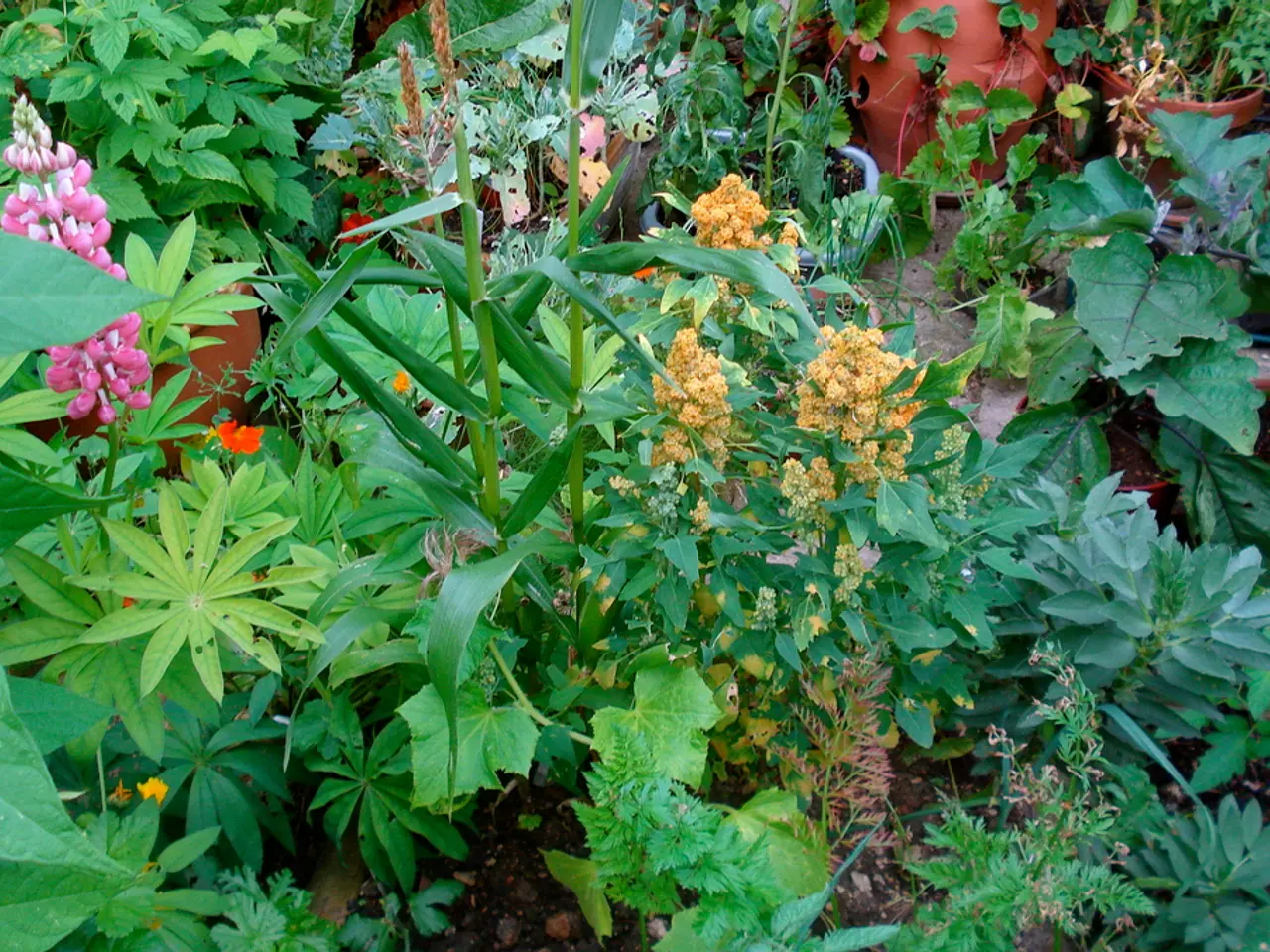Outdoor Basil Care: Crucial Guidelines for Vigorous Growth of Herbs
In the world of herbs, basil stands out as a flavourful and versatile addition to any garden. Here's a step-by-step guide to help you cultivate, care for, and harvest a healthy and productive basil plant.
**Cultivating Basil**
To grow basil successfully, plant seeds when the soil has warmed to at least 50°F (10°C), ideally around 70°F (21°C) for optimal growth. Choose a location with full morning sun exposure, providing 6-8 hours of direct sunlight daily.
Propagating basil can be achieved using cuttings. Take 4-inch cuttings from a mature plant, avoiding stems with flowers. Plant them in well-draining soil with the top leaves above the soil surface. Keep the soil moist and provide bright, indirect light.
**Watering Basil**
Watering basil requires attention to moisture levels. Water deeply at soil level, providing about one inch of water weekly. Use the finger test to check moisture levels—stick your finger 1-2 inches into the soil and water when the top layer feels dry. Avoid sprinkling leaves to prevent fungal diseases.
Basil is prone to root rot, so ensure the soil is moist but not soggy. Pots dry out faster than in-ground gardens, so monitor moisture levels closely, especially in hot weather.
**Caring for Basil**
Use well-draining soil with a pH between 6.0 and 7.5, enriched with compost or organic matter. Space plants 12-16 inches apart for better airflow, which helps prevent disease.
Fertilize basil with a balanced 10-10-10 fertilizer every 2-4 weeks during the growing season. Organic options like fish emulsion or seaweed extract can also be beneficial.
Keep the temperature around 70°F (21°C) for optimal growth. Prune flowers to encourage leaf growth and prevent the plant from going to seed.
**Pest and Disease Management**
Pest and disease management for basil outdoors involves proactive strategies to prevent pests and manage diseases, ensuring the plants remain healthy and productive. Handpicking beetles off plants early in the morning can help control their population. Using neem oil, a spray, can effectively deter aphids from basil plants. Crushed eggshells or diatomaceous earth around basil discourages slugs due to the sharp edges.
Downy mildew in basil can be managed by pruning affected areas and improving air circulation. Fungus and mold in basil can be mitigated by using well-draining soil to prevent excess water from being trapped. Proper air circulation between plants reduces the risk of pest infestation.
**Harvesting Basil**
The best time to harvest basil is in the morning when the essential oils are strongest. Fresh basil leaves add a burst of flavor to green salads, while edible flowers of basil can be used as decorative garnishes that offer a milder taste than the leaves.
By following these techniques, you can ensure a healthy and productive basil plant. With its aromatic leaves and versatility in dishes, as well as its medicinal qualities, basil is an appealing addition to any garden.
[1] Gardening Know How. (2021). How to Grow Basil from Cuttings. [online] Available at: https://www.gardeningknowhow.com/edible/herbs/basil/grow-basil-from-cuttings.htm [2] The Spruce. (2021). How to Grow Basil Indoors. [online] Available at: https://www.thespruceeats.com/grow-basil-indoors-1408680 [3] The Old Farmer's Almanac. (2021). Basil. [online] Available at: https://www.almanac.com/plant/basil [4] HGTV. (2021). The Best Plants for Full Sun. [online] Available at: https://www.hgtv.com/design/landscaping/outdoor-spaces/plants-for-full-sun
- As your herb garden flourishes, consider incorporating a home-and-garden staple like basil.
- By embracing a nurturing lifestyle for your basil plant, you can enjoy its flavorful leaves and decorative flowers in various dishes and as garnishes.




